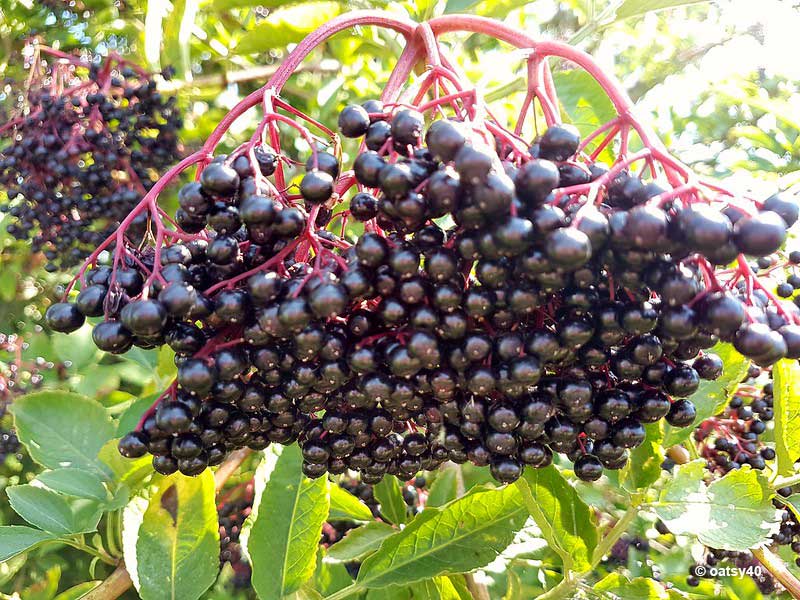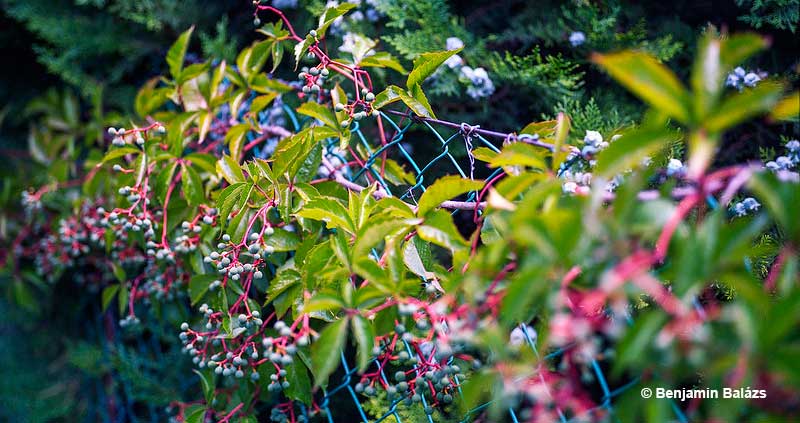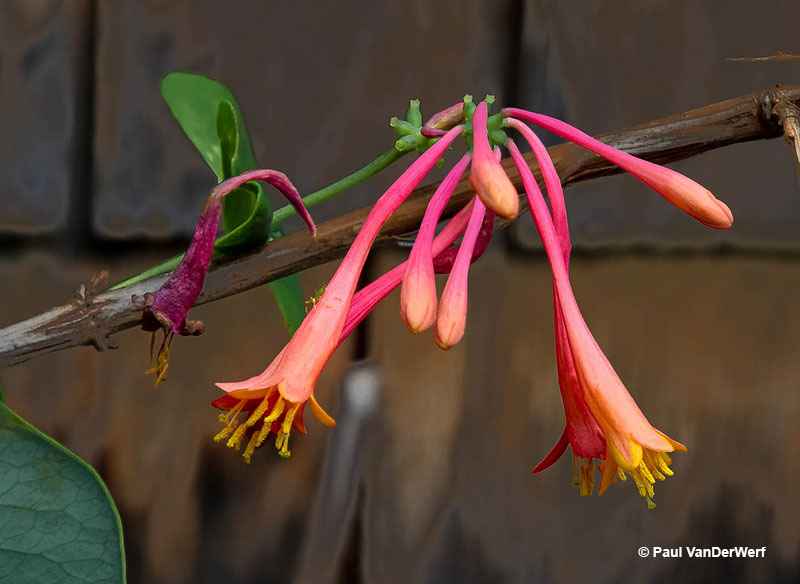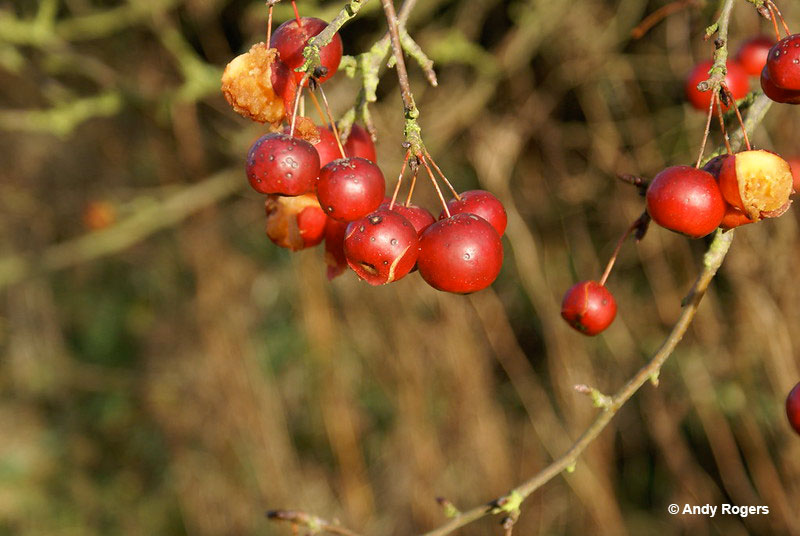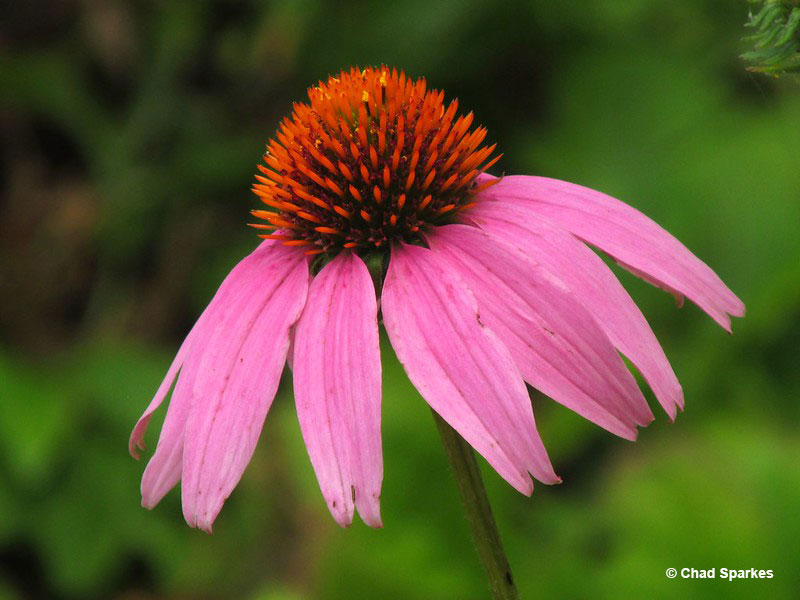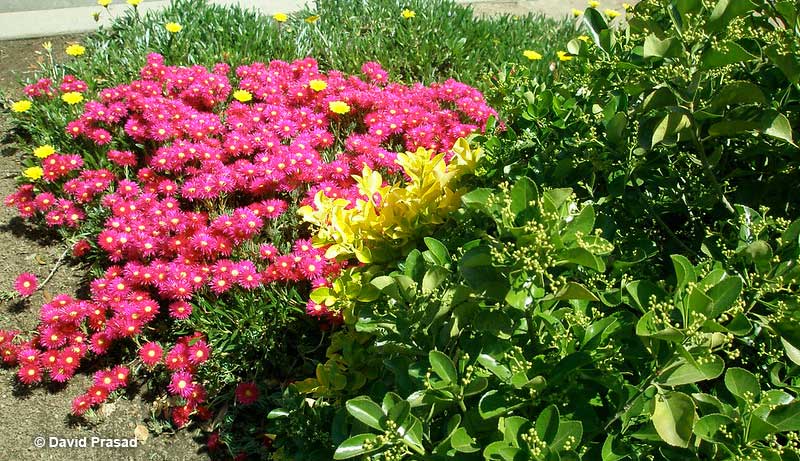
The best gardens are the ones that attract lots of birds! To bring in the birds, I use feeders and a bird bath but what the birds love the most are bird-friendly bushes and trees.
No matter how many feeders you host, birds still need habitat for rest, relaxation, and additional natural food sources. Some bushes and trees also work better for birds than others. Try these ten plants to can turn your backyard into a bird oasis!
On this page
Why Do Birds Love Flowers And Different Plants?
Birds like certain plants because they need them for survival. In general, they use them for food and shelter as well as preferring certain types of plants for nesting.
For example, hummingbirds can’t survive without nectar, but they won’t feed from any old flowers. Ruby-throated Hummingbirds and other hummingbird species are adapted to foraging at small tubular blooms like Trumpet Honeysuckle, Bee Balm, and Cardinal Flower.
Related: How to make your garden safe for birds?
Orioles and some warblers also enjoy nectaring at flowers and many species catch insects attracted to flowers. The other main types of plants that provides birds with food are native bushes and trees that produce small berries.
Small fruits make up an important part of the diets of thrushes, grosbeaks, tanagers, warblers, and many other birds. Put those plants in your garden and you could provide them with vital sources of food, especially during the winter.
Finally, birds also need plenty of dense vegetation where they can hide from predators and shelter from wind, snow, and rain.
Plants That Attract Birds
Dogwood
Cornus alternafolia, Cornus nuttallii, and other Cornus species
Attracts: Northern Cardinal, Tufted Titmouse, Eastern Bluebird, Cedar Waxwing, Northern Mockingbird, and other species.
Dogwoods are small shrubby trees with dark green smooth-edged leaves and scaly bark. In spring, they can have profuse blooms of beautiful white, pink, or red flowers, and their leaves turn bright red in fall.
Dogwoods can produce large numbers of small fruits in summer and fall. These fruits are the main reason birds like these trees so much although their foliage also provides food for warblers and other insectivores.
There are several species of Dogwoods with some being more adapted to certain areas than others. They do well in partial or full shade and in damp but well-drained soils.
Elderberry
Sambucus species
Attracts: Gray Catbird, Red-eyed Vireo and other vireo species, Brown Thrasher, Northern Mockingbird, Hermit Thrush.
Elderberry plants are dense bushes with rather narrow leaves. They have bunches of small white flowers in spring and small, dark purple or black berries in late summer and fall.
These pretty bushes are great places for small birds to hide, and shrub-nesting species like Northern Cardinals and sparrows may use them as nest locations. Many small birds also love to eat Elderberry fruits including Gray Catbirds, Red-eyed Vireos, and other species.
Elderberries are usually easy to grow. They like full or partial sun, and moist but well-drained, neutral to acidic soils. However, they don’t tolerate drought and need to be watered.
Oaks
Quercus species
Attracts: Acorn Woodpecker, Red-headed Woodpecker and other woodpecker species, Great-crested Flycatcher and other flycatchers, Summer Tanager, Vireos, Warblers, and many other birds.
Different species of oaks are adapted to different regions of North America. However, no matter where they occur, all are very important trees for birds. Many oak species can grow to become huge, impressive trees that provide vital food and nest sites for innumerable birds over the course of their long lives.
We can recognize oak trees by their furrowed bark, big limbs, and distinctive leaves with rounded notches. We also know where oaks are growing when we see acorns on the ground. Those acorns act as an important food for nuthatches, jay species, and woodpeckers, especially the Acorn Woodpecker.
Most oaks grow well in open and sunny conditions.
Virginia Creeper
Parthenocissus quinqefolia
Attracts: Northern Mockingbird, White-breasted Nuthatch, Blue Jay, Cedar Waxwing, Downy Woodpecker, and many other species.
The Virginia Creeper (also known as “Woodbine”) is a climbing vine with abundant green foliage. Its rather spade-shaped leaves grow in groups of five, and turn crimson in autumn. In late fall and winter, it also has small, dark purple berries.
Virginia Creepers can grow on the sides of buildings, on trees, and on the ground.
Several species use the dense vegetation for cover, and migrants, such as warblers, thrushes, and vireos feed on the berries. Many other birds also use it as a food source in early winter.
Virginia Creepers are easy to cultivate and do best in sunny, well-drained spots.
Trumpet Honeysuckle
Lonicera sempervirens
Attracts: Ruby-throated Hummingbird, American Robin, Baltimore Oriole, warblers, vireos, and other species.
The Trumpet Honeysuckle is a deciduous vine that can grow to 15 feet tall. It has waxy, rounded leaves and clusters of tubular, beautiful red flowers. It blooms in late spring and early summer and produces small red berries in the fall.
This is one of the better trees for Ruby-throated Hummingbirds, and it can also attract other hummingbird species. Orioles might visit the flowers and since they attract insects, warblers and other insectivores come to feed on them.
See more: Plants that attract hummingbirds
In fall, many migrant birds and resident species forage on the berries. This plant grows well in dry, semi-shaded places in all sorts of soils.
Milkweed
Asclepias species
Attracts: American Goldfinch, Gray Catbird, sparrows, Yellow Warbler, Ruby-crowned Kinglet, and other species.
Milkweeds are common, “weedy” plant species that are two to four feet in height. They have thick leaves and are topped with a clump of small flowers. Their blooms can be white, lavender, or red and orange.
These plants are perfect for attracting Monarch Butterflies to the backyard as well as lots of various warblers, sparrows, and other small birds that feed on insects.
Goldfinches and other small birds also make their nests with fibrous and downy plant matter that comes from Milkweed. Use Common Milkweed and Butterfly Weed in hot, dry areas, and Swamp Milkweed in wet parts of the garden.
Crabapple
Malus species
Attracts: Northern Cardinal, Eastern Bluebird, American Robin, Red-bellied Woodpecker, and Purple Finch.
Crabapples are short or medium-sized trees loaded with white or pale purple flowers in spring. In fall and winter, they also have small, tart apples.
Related: What do birds eat?
True to their name, Crabapples are related to apple trees, although their fruits are much better for the birds than people. In spring, these trees are great for attracting small birds that catch insects around the flowers. However, even more species feed on crabapple fruits in fall and winter.
These trees grow well in rich, well-drained places with acidic or neutral soils. It’s best to plant them in backyards with lots of room.
Purple Coneflower
Echinacea species
Attracts: American Goldfinch, Pine Siskin, Dark-eyed Junco, Northern Cardinal, Blue Jay
The Purple Coneflower is a “weedy” plant with a tall, three-foot stalk and an eye-catching summer blossom. These plants are also beautiful and easy to recognize. They have violet flower petals that hang downward a little bit and a big, “domed” orange flowerhead.
In spring and summer, Purple Coneflowers attract insects that can attract small birds. However, many more birds will come to feed on their seeds in fall and winter.
Purple Coneflowers are easy to cultivate and prefer open, sunny areas. They need well-drained soils but are pretty tolerant of many other growing conditions. It’s good to water them but they can even do well in droughts.
Sunflower
Helianthus species
Attracts: American Goldfinch, Pine Siskin, Indigo Bunting, Rose-breasted Grosbeak, sparrows, and other species.
Sunflowers are some of the easiest plants to recognize. These prominent plants have a big, bright yellow flower on top of a tall stalk. They can also grow to be ten feet tall!
We love to look at them, but birds love them even more! Although some birds may visit these plants to feed on insects, most species wait for sunflowers to have their seeds. Just as dozens of birds feast on sunflower seeds at feeders, they also like to eat seeds straight from the plant.
Fortunately, sunflowers are easy to cultivate. As long as you plant them in well-drained areas, sunflowers can live in most soils.
Spruces
Picea species
Attracts: Red-breasted Nuthatch, Red and White-winged Crossbills, various warblers, Golden-crowned Kinglet, and possible roosting owls.
Spruces are beautiful conifers with dense blue-green, and dark green foliage. Although they resemble pines, spruce species have shorter needles, while pine needles are longer and grow in bundles.
Spruce trees act as a wonderful habitat for many bird species. Birds of all sizes love the cover that their foliage provides, and in winter, they can attract crossbills and other conifer-loving species. In summer and migration, spruces also attract warblers and other small birds.
This tree can grow quite tall, and its branches can reach twenty feet from its trunk. With that in mind, spruces should be planted far enough from the edge of a house and in full sun.
How To Turn Your Garden Into Bird Paradise
No matter how big or small, every garden can become a bird-friendly paradise. Birds look for places with good habitats, and if you provide them, they will come. Although the best spots for birds require enough space for various types of habitat, even small areas with native plants will have an effect.
Cultivate species native to your region, and you will essentially be restoring a bit of wild habitat right in your own backyard! Native plants will attract native insects, which in turn attract birds and other wildlife.
However, for the best results, we don’t want to have a garden dominated by one sole plant species. For example, cut lawns can look neat and orderly, but they are terrible for birds. Sure, an American Robin, Northern Mockingbird, and a few other species may visit, but there won’t be much else.
On the other hand, a garden with a diverse variety of native plants can attract everything from hummingbirds to goldfinches, warblers, different types of sparrows, juncos, Northern Cardinals, and much more!
The best bird-friendly gardens have some seed-bearing plants, bushes, and other plants that produce berries, plants for hummingbirds, and some trees. They also have bushes, wood piles, and other places where birds can find shelter and hide from predators.
Frequently Asked Questions
What plants do birds like most?
Plants birds like most are ones that provide them with berries, insects, and nectar. They also like plants where they can hide in dense vegetation.
What flower characteristics are most likely to attract birds?
Flower characteristics most likely to attract birds are blossoms that are tubular, and red, yellow, or orange.
Will birds eat sunflower seeds from the plant?
Yes, birds will eat sunflower seeds from the plant.
What does the bird get from the flower?
The birds gets sweet nectar from the flower.
Read next: Bird conservation – threats & helping birds



